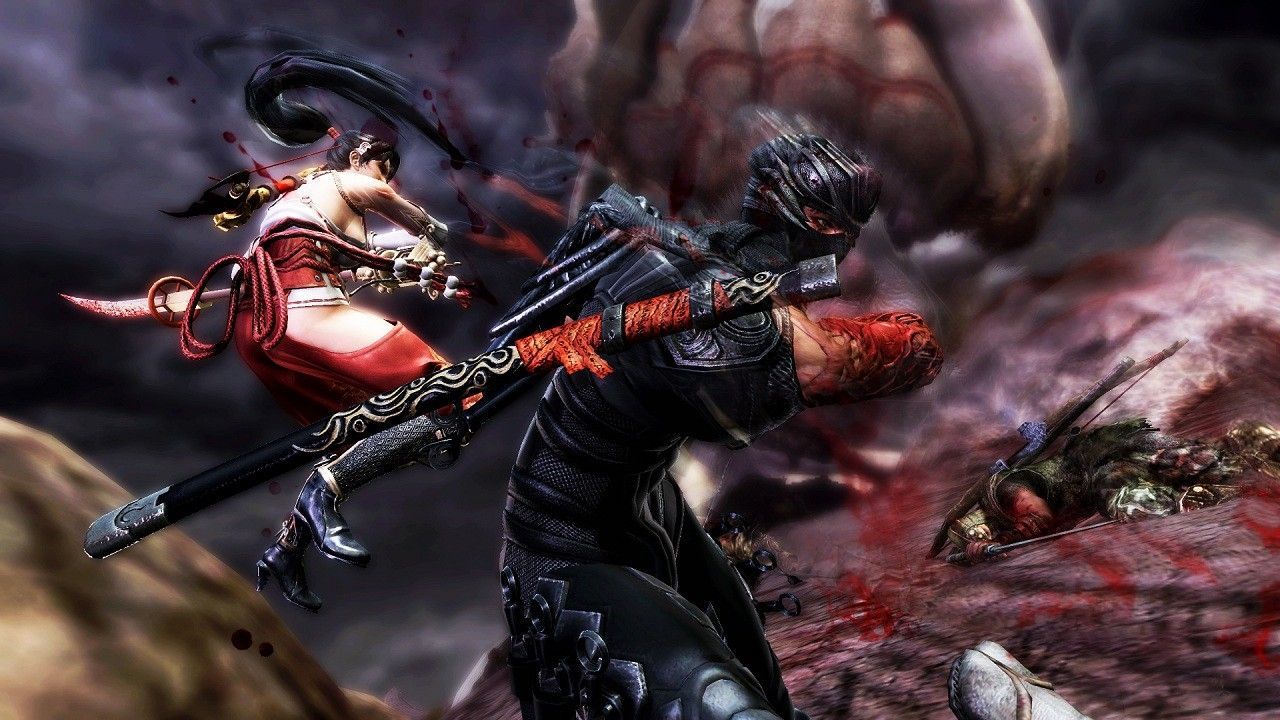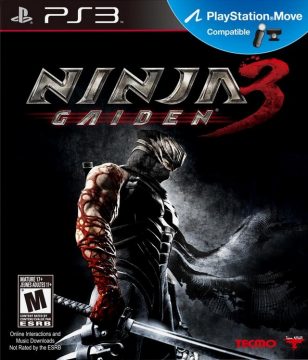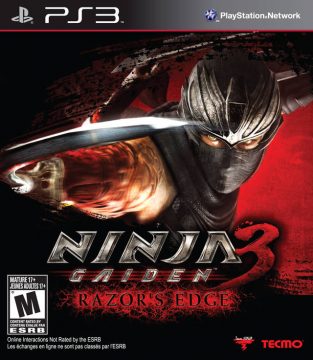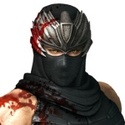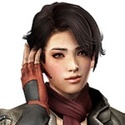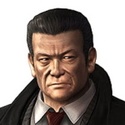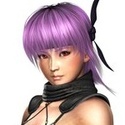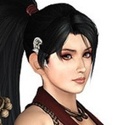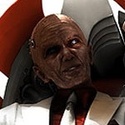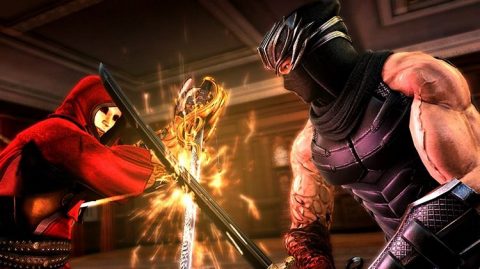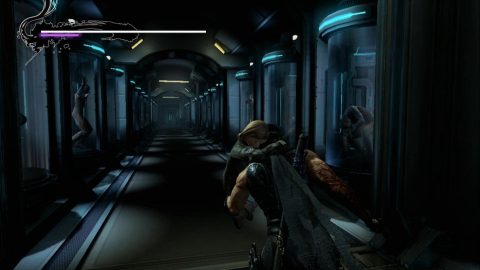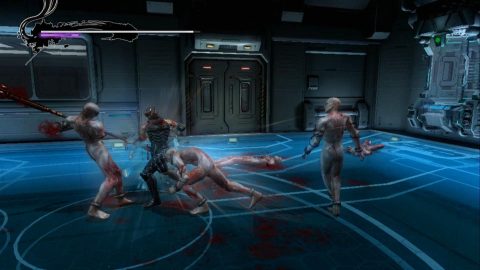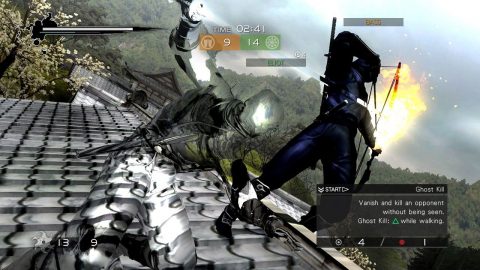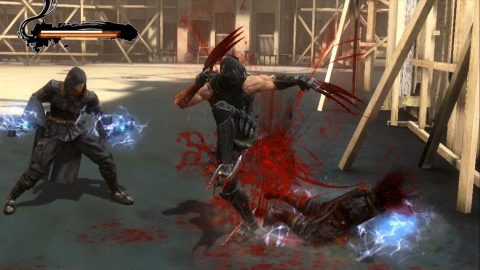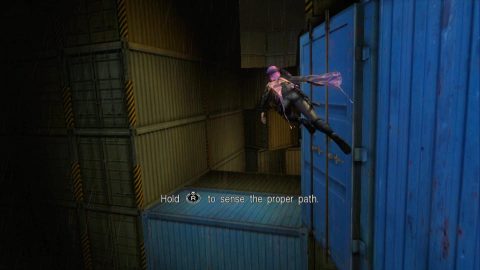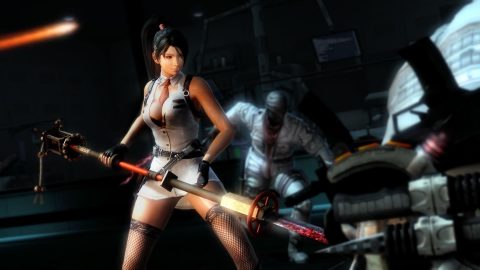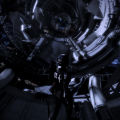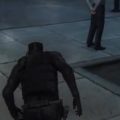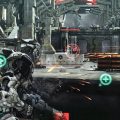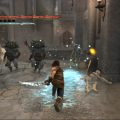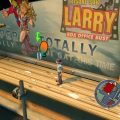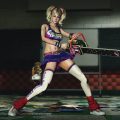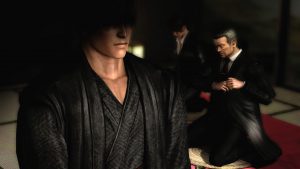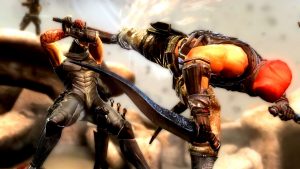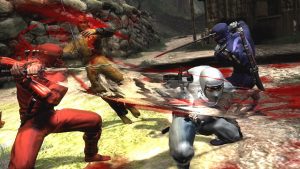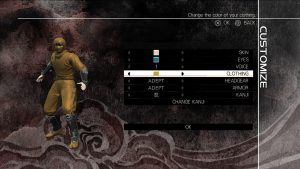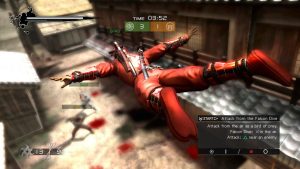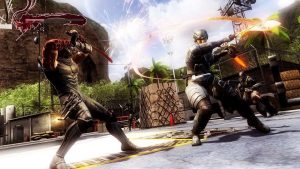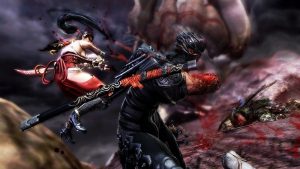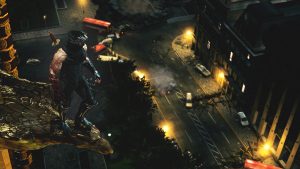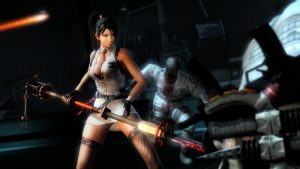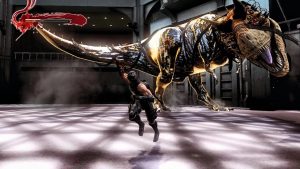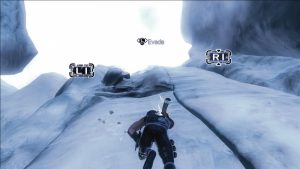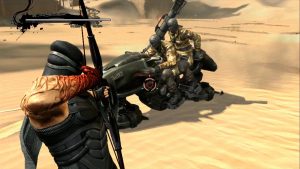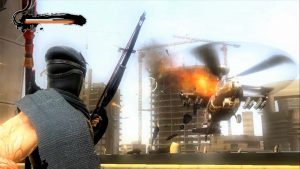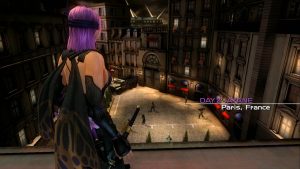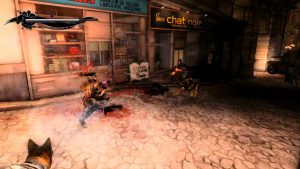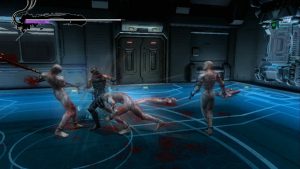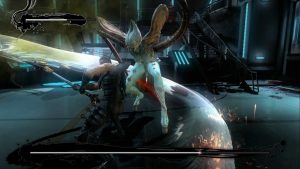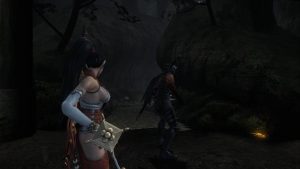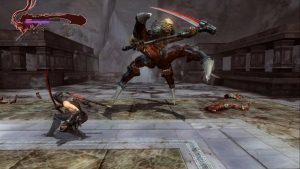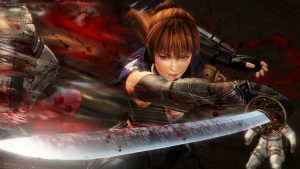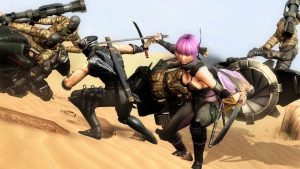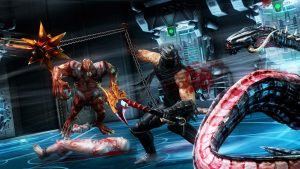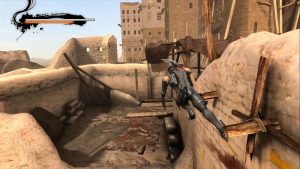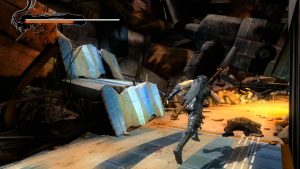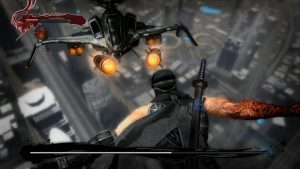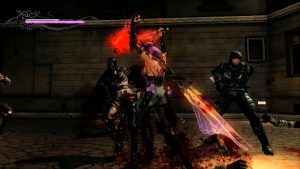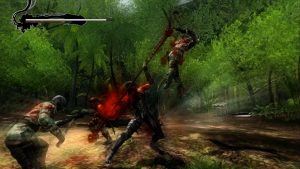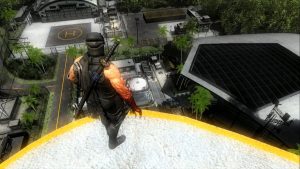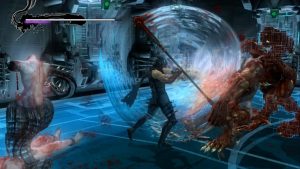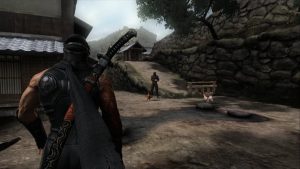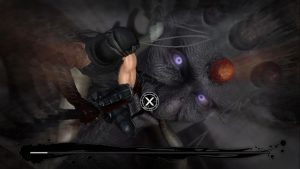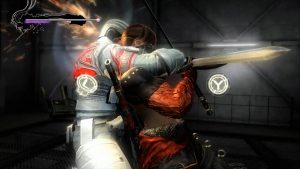- Ninja Gaiden (Arcade)
- Ninja Gaiden (NES)
- Ninja Gaiden II (NES)
- Ninja Gaiden III (NES)
- Ninja Gaiden Shadow
- Ninja Gaiden (Game Gear)
- Ninja Gaiden (Master System)
- Ninja Gaiden (Genesis)
- Ninja Gaiden (2004)
- Ninja Gaiden: Dragon Sword
- Ninja Gaiden II (2008)
- Ninja Gaiden 3 (2012)
- Yaiba: Ninja Gaiden Z
- Ninja Gaiden Old & New
- Ninja Gaiden: Miscellanous
- Masato Kato (Interview)
Attention: Many of the screenshots on this page are promotional materials and differ in presentation from the actual game. Only those showing the on-screen displays are real screenshots. The latter are taken from gamesaktuell.de, ign.com and nowgamer.com.
Ninja Gaiden 3 was Team Ninja’s first all-new series entry in their post-Itagaki (and also post Hiroaki Matsui and Katsunori Ehara, which is overlooked too often) world, to prove that they could create a great action game from the ground up on their own. Unfortunately, they completely fumbled it. Ninja Gaiden 3 is just a poster example of a horribly misguided sequel, both in terms of tone and game design.
Starting with the very premise, Ninja Gaiden 3 oozes the desire to be darker and grittier just for the sake of being dark and gritty, best exemplified by Yosuke Hayashi’s constant insistence that Ryu Hayabusa was a “Japanese Dark Hero” now during presentations of the game. Series veteran Masato Kato had been brought back on board to pen the story, but somehow that didn’t translate into a rediscovery of old virtues. It rather seems that he since graduated from the Hideo Kojima school of writing, so the new game is full of boring exposition, pretentious moralizing and a weird kind of half-realism. In his home, Ryu Hayabusa is approached by the members of a military force, who inform him of a terrorist attack. That’s right, no ancient superhuman demons this time, just terrorists, even though they call themselves the Lords of Alchemy. They actually demanded Ryu to show up at their location, for nebulous reasons. Well knowing that it has to be a trap, Ryu faces the masked antagonist only known as The Regent of the Mask, who puts an old Eastern European curse on Ryu that causes the Dragon Sword to be absorbed into his right arm, which is then filled with the spite of all the countless people the ninja has killed. Of course that offers just as countless opportunities to hammer down ad nauseum how Ryu is just as bad as his adversary each time the two meet. After all, Ryu is a Japanese Dark Hero.
The Cast
Ryu Hayabusa
He’s a Japanese Dark Hero. With his Japanese Dark Hero powers he strives to overcome his Japanese Dark Hero curse and defeat his enemies as a Japanese Dark Hero, before they can feed him variations of “we’re not so different, you and I” so often that he starts bleeding out of his Japanese Dark Hero ears (Japanese Dark Hero bleeding pictured). Japanese Dark Hero.
Member of a special unit within the Japanese Self-Defense Force, she approaches Ryu with her superior Ishigami about the terrorist threat. During the operation, she’s also single-mothering Canna, the orphaned daughter of her sister. Ryu bonds with the two during the mission, but apparently someone watched The Dark Knight before writing the story, so in the end Ryu does what a Japanese Dark Hero has got to do.
Secretary of Japan’s Ministry of Defense, he leads the operation against the terrorists, but always leaves the impression that he might be hiding something.
Mister Exposition for this game is a big shot in the Lords of Alchemy, and just an annoying, arrogant pain in the ass. He puts a curse on Ryu, although it is never elucidated how he gained this paranormal ability. His identity is involved in a twist that is completely unpredictable, but just feels cheap and contrived when it happens.
Her role in the main story is tiny again: She brings Ryu Hayate’s katana as a loan after he loses the dragon sword, and has a few short appearances afterwards. In Razor’s Edge she stars as a playable character in a few added missions that are only tangentially related to the plot.
Cliff is a scientist working for the JSDF, and incidentally also the brother of Mizuki’s sister’s husband.
Momiji joins up with Ryu when he returns to the Hayabusa village to seek treatment for his curse. Apropos of nothing, the two end up fighting Obaba from Ninja Gaiden Dragon Sword again.
The withered old man is the CEO of a multinational corporation called LOA, which – surprise, surprise – stands for Lords of Alchemy. His company is involved in unethical genetical experiments, and the terrorist attacks are launched to facilitate these plans.
The mean femme fatale is in charge of LOA’s laboratories. She doesn’t get any more characterization than that.
She never meets Ryu directly in this game, but supports him from the shadows. During Ayane’s sections in Razor’s Edge, she employs the kunoichi in supporting missions and functions as her operator. Even though the game never explicitly addresses the name change, she is apparently still the same person as Sonia from Ninja Gaiden II.
After her presence was teased at in Ninja Gaiden Sigma II, Kasumi doesn’t actually appear in the story of Ninja Gaiden 3 (she had a few short, disguised cameo appearances in Sigma 2), but becomes another playable character in multiplayer, effectively replacing Rachel even though her fighting style lies somewhere between Ryu and Ayane’s.
After Itagaki’s extremely brutal send-off and the subsequently tame Sigma 2, Ninja Gaiden 3 makes a 1080 on the gore, but follows a very twisted and disturbing concept of violence. At one point in the opening mission, a cutscene shows an enemy mercenary surrender. Then the player is forced back in control of Ryu, but all that can be done is slowly walking towards the enemy, who continues to advance backwards, pulling off his mask, talking about his family and begging for his life. Then you can either turn off the game or commit cold-blooded murder. Yosuke Hayashi frequently talked about how Team Ninja wanted to make Ryu a “Japanese Dark Hero” who “sometimes has to do bad things in order to do good” and to try to teach a moral lesson by “getting blood on the player’s hands,” but it all feels just dishonest and mean-spirited and sick. Ryu is not a “Japanese Dark Hero” in these scenes, he is a cold-blooded murderer with no redeeming qualities whatsoever. It makes the later scenes, where he bonds with Mizuki and Canna, seem like no more than calculating deceptions of a psychopath, or simply like a completely different character with no continuity to his previous actions. That scene makes even less sense when later enemies try to run away during gameplay, and it is very well possible to spare them – which is still pointless nonetheless, as the player’s actions have no consequences whatsoever.
The game may be less brutal than Ninja Gaiden 2, but it is much more cruel. Enemies are not dismembered any more, but fountains of blood still spill out of them, and the camera frequently zooms to a closeup when Ryu’s sword slices through them. Whereas Ninja Gaiden 2 explored brutality as a necessity in fantasy combat situations, Ninja Gaiden 3 just revels in human suffering. “Once you start lopping off limbs, your enemy goes from being a living thing that you’re killing to just a thing” – such is the disturbing view of Yosuke Hayashi. Yet with the dismemberment that turns enemies into suicidal fanatics gone, wounded enemies instead become mere victims as they crawl on the floor helplessly. Executing them in this state with the now repurposed Obliteration Techniques greatly builds up ki, reducing them to exactly what Hayashi accused Ninja Gaiden II of.
The tone is so messed up it would be hard to justify playing this game even when the action was excellent. Fortunately, the gameplay is even worse, so no one needs to feel bad for skipping this game. It’s not easy to fathom how the remaining Team Ninja could start from the solid system of the previous games and somehow make it this bad. It starts with the aforementioned constant close-up zooming, which is not only disorienting, but also can make you feel like throwing up all the time. Combat is riddled with short, one-button quick time events that do nothing but destroy the pacing. Ninja Gaiden 3 has a lot of new gameplay elements, but not one of them works for the game. Ryu now very frequently finds himself in situations where he has to glide down from huge buildings (no parachute, hangglider or any other tool needed, of course). These sequences are boring and non-interactive aside from more occasional QTEs to avoid projectiles or to instantly kill an enemy at the landing spot. Ryu can also slide beneath some obstacles and hazards that come flying at him, which once again is presented as a QTE. The game also tries to encourage some really awkward stealth sequences. Countless words have already been written on the futility of stealth sequences in non-stealth games, and they were all right.
But the worst new addition is the atrocious climbing mini-game that occurs whenever Ryu has to scale a vertical wall. He jumps towards it, and the player is QTE-prompted to stick two daggers into the stone by pulling shoulder triggers on both sides. Then left and right have to be pult in alternation to slowly climb up. This takes forever and is often filled with additional annoying hazards that keep falling down to undo your progress. It’s possible to evade to the left and right, but getting on with the climbing afterwards is quite glitchy, resulting in many falls to the death when failing to get into the exact rhythm from the very first button press afterwards. It’s also really easy to get stuck in obstacles here. How these sequences ever made it through quality assurance is just baffling.
Every now and then, the curse takes ahold of Ryu, causing him pain to his arm and forcing him to stumble forward at an excruciatingly slow pace, until it just disappears. A very different narrative function, but a similar effect on gameplay have the frequent radio communication scenes where Ryu is briefed by Mizuki and can only slowly walk forward until they’re done talking – because cutscenes are not enough, and “slow and wordy” is what everyone thinks when they hear Ninja Gaiden, right?
Combat feels bland, as well. The only weapon around this time is the katana (well, aside from the bow), although later patches added the claws and the scythe. There’s also only one ninpo attack, which is charged during combat but gets drained as soon as there are no enemies left on screen. The few times it can actually be used, however, it kills nearly everything on screen and recharges Ryu’s health. There is literally nothing to upgrade or unlock, all the parameters stay just as they are in the beginning. The dismemberment of Ninja Gaiden II is gone entirely, replaced by the new “Sword on bone” mechanic, which allows Ryu to dash from enemy to enemy in a semi-automatic combo, killing each of them instantly, but while not entirely random, it is quite unreliable and surely feels random during play. Ultimate Techniques can now only be used after killing a number of enemies until the sword starts glowing red, and Ryu warps to the next enemy instantly to execute them.
Worst of all, there is hardly any enemy variation throughout the game. For the first few mission, Ryu meets nothing but a few types of ordinary commandos, aside from the bosses. Then the boring old Spider Clan ninjas join them for the next few missions. All of them are very vulnerable to the Izuna Drop, which has always been a bit overpowered against human enemies, but since now there’s almost nothing but human enemies, it becomes excessive. The same enemies attack over and over again in neverending waves, so fighting them feels more like wading through molasses than overcoming a threat. Very late in the game appear a few fiends (recycled from previous games) and mutations that require different tactics, but they take almost forever to kill. Even the bosses are lame, many of them require very specific patterns of attack and often cannot be damaged at all for prolonged times, so Ryu can do nothing but wait and evade. To reach ultimate levels of suck, Team Ninja also removed their life bars, so you never know when they will finally go down, and sometimes can’t even tell for sure if Ryu is actually damaging them. Unlike previous episodes that completely remixed the encounters in higher difficulty levels, Ninja Gaiden 3 just causes enemies to deal more damage.
The one potentionally awesome change brought by Ninja Gaiden 3 is the introduction of competitive multiplayer. Up to eight players enter the arena as generic ninja dudes – there is a range of customization options, but apart from a few out-there masks, they are limited to conventional ninja suits – to battle it out in a team deathmatch. It quickly becomes clear, however, why Team Ninja was avoiding this much asked for feature for so long. The engine simply isn’t laid out too well to support fights with multiple combatants on each side. It works out reasonably well when two players duel each other, but in a 2-to-1 situation things already become unfair and glitchy. There’s also a really stupid feature where one player stabs the other and both have to tap buttons to resolve the situation, all the while their game avatars stand frozen in place for multiple seconds as if they’ve glitched out of the internet connection. It’s all just a chaotic, dissatisfying mess.
Interesting in concept are the Shadow Contracts, additional objectives individual to each player and hidden from the others. They include basic stuff like performing certain combat moves, but also goals like assassinating an arbitrarily determined leader of the other team, or enacting revenge on the opponent who last killed you. There’s even a contract to betray the own team by assassinating a member and joining the opponents. It’s also possible to commit seppuku before dying, in order to deny the opponent the kill and the score that comes with it. At least the Shadow Contracts maintain some variety and interesting uncertainty to the otherwise fairly monotonous slaughtering, even if they do nothing to cancel out the basic engine problems.
It is no exaggeration to call Ninja Gaiden 3 the worst game in the entire franchise (well, at least when excluding the unfinished Genesis prototype), but Team Ninja tried to repent by fixing some of its countless flaws with an upgraded version, subtitled Razor’s Edge. On the surface level this release adds Ayane, Momiji and Kasumi as playable characters in multiplayer, and supplements the story mode with two chapters where Ayane fulfills various missions for Irene that are indirectly tied to Ryu’s quest. As usual, Ayane’s moveset and gameplay feel differ only slightly from Ryu’s, and while the new chapters aren’t too bad at all and devoid of any of the annoying stopgaps suffered in the original campaign, they do feel a bit like insubstantial filler with little relevance to the rest of the game.
But the really important achievements of Razor’s Edge lie in the details. For starters, the annoying kunai climbing has been sped up a lot. It’s still garbage and glitchy, but at least now it’s over faster, and a few climbing sequences have been replaced by regular wall jumping. Some of the really bad cutscenes and QTEs have been removed (good riddance to you, pointless forced slaughtering of a surrendering mercenary!) and the scenes where Ryu fights against the curse now conclude with long arena fights in another dimension. Which is pointless from a story perspective, but at least there’s some gameplay connected to it now.
The dismemberment mechanics from Ninja Gaiden II are brought back in full swing, but that doesn’t mean the end of the “Steel on Bone” gimmick – it merely got revised to be intentionally usable and actually is kind of fun now when you manage to get a streak of steel on bone finishers. Ultimate Techniques and ninpo are also back to normal.
The scarab collectibles from the 2004 Ninja Gaiden return, although here they are used to make new skills accessible. These still have to be unlocked using karma, and include various combat abilities, health expansions, ninpos, costumes and – last but not least – several weapons from the previous games. The Lunar Staff, Kusari-gama and Dual Katanas return, making the gameplay about as varied as they were in Ninja Gaiden II. There is also a new Test of Valor in every stage, accessed by picking up a sometimes well-hidden crystal skull. The improvements are rounded up with some bugfixes and a more stable framerate.
The AI has also improved a bit, but the game still throws far too many and long waves of the same boring enemies at you (which don’t try to run away anymore and have regained the kamikaze mentality from the previous game). The combat engine may be good again, but by Ninja Gaiden II, it already showed its wear. Ninja Gaiden 3 just beat the horse to death with its bad encounter design and endless repetition, and Razor’s Edge doesn’t do enough to breathe new life into it.
Razor’s Edge is a much, much better game than the original Ninja Gaiden 3, but it still hardly exceeds “tolerable” as an attribute. While much of the putridity has been cut away, the game still remains somewhat rotten at the core. It’s still very boring and monotonous compared to Team Ninja’s previous efforts, before the departure of the key development leaders. Between their Devil’s Third boiling in development hell for years, only to be revealed as a multiplayer-focused, awkward-looking mix between swordplay action and shooter and Team Ninja’s fumbling efforts to continue the Ninja Gaiden series, the future doesn’t look so brightly for fans of Japanese action games apart from the Devil May Cry / Platinum Games strand.
